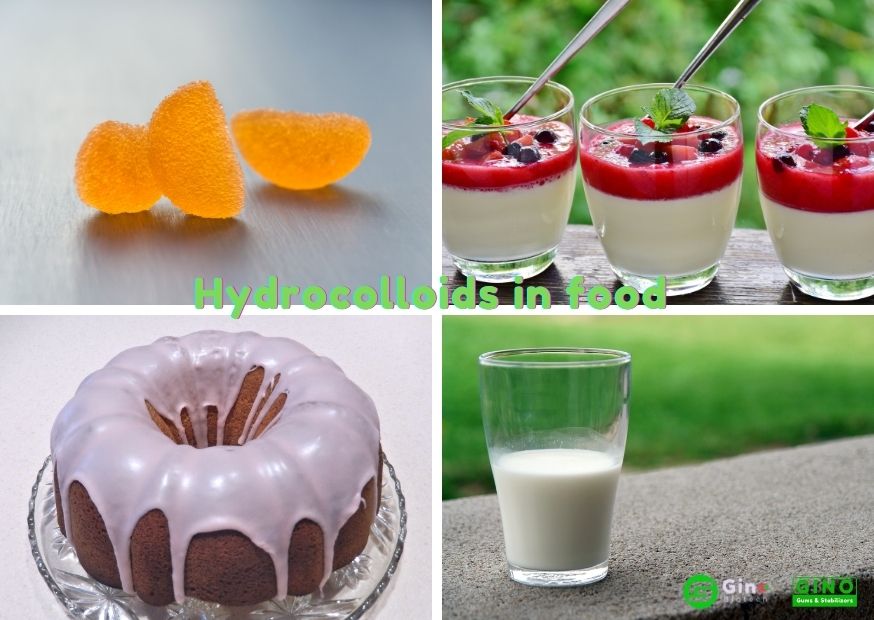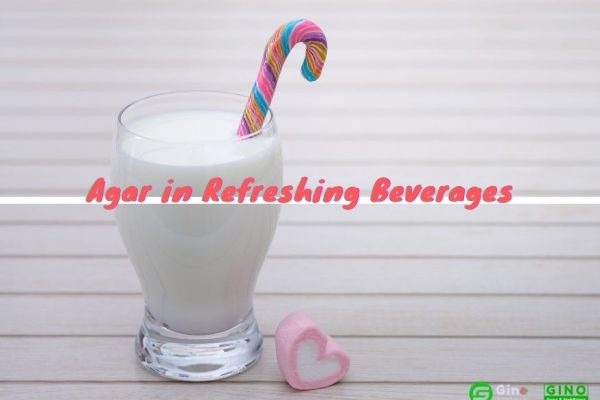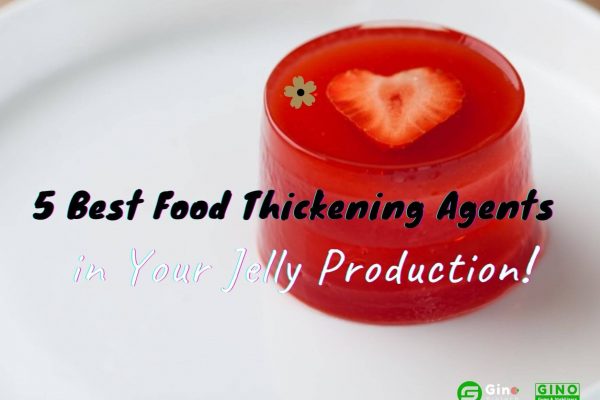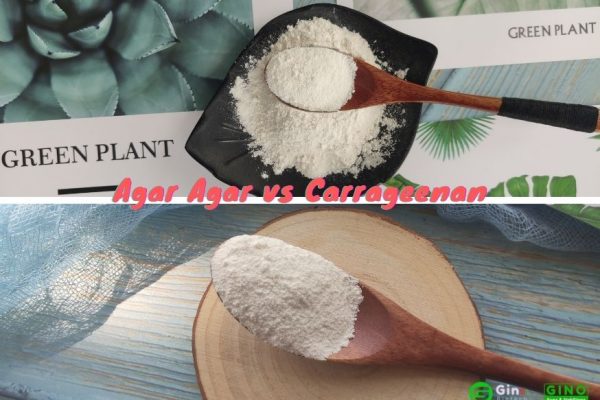What is the Role of Hydrocolloids in Food?
Role of Hydrocolloids in Food
Abstract
The texture of food is one of the most important properties of food in addition to color, flavor, and taste. Hydrocolloids are used in the food industry precisely as food quality improvers to improve certain characteristics of food in terms of taste, appearance, shape, storage, etc. So, what is the role of hydrocolloids in the food industry?

At present, it is almost impossible to find a food product that does not contain hydrocolloids (acting as system stabilizers) in many food products, especially in the West.
Hydrocolloids are widely used in the food industry, mainly in the role of gelling, thickening, dispersing, water-holding, filming forming, and other roles, please see below for details.
1.The role of gelling
Some hydrocolloids, such as gelatin, agar, pectin, and other solutions, are viscous fluids under warm conditions, and when the temperature decreases, the solvent molecules are connected into a mesh structure, and the solvent and other dispersed media are all contained in the mesh structure, and the whole system becomes a semi-solid without mobility, which is a gel.
The critical concentration of gelling and the critical temperature of gelling of hydrocolloid-forming gels vary with the pH of the system, the presence of electrolytes, and the presence of other proteins and polysaccharides.
Ionic macromolecules (e.g., alginate) can form gels in the presence of highly valent ions, without any relationship to the amount of temperature.
The formation of co-mingled gels between proteins, polysaccharides, and between proteins and polysaccharides can reduce the critical gelation temperature and critical gelation concentration for the formation of gels alone, and even two polymers that cannot form gels alone can form gels after co-mingling, which is useful for processing specialty foods and producing new types of puddings, snacks, and candies.
2. The role of thickening, dispersing and stabilizing
Hydrocolloids are water-soluble macromolecules, which have great viscosity when dissolved in water, giving the system a thick feeling, and can be used as a filling agent for pie fillings, drinks, jams, etc., a binder for pet food, and can also be used to hang icing (such as cakes), glazing (such as coffee), and frosting (such as frosting for cakes) with its adhesive properties.
With the increase of system viscosity, the dispersed phase in the system is not easy to gather and coalesce, thus it can make the dispersed system stable, and can be used for the stabilization of juice drinks, beer foam, and pastry laminating.
Most hydrocolloids have surface activity and can be adsorbed on the surface of the dispersed phase, making it easy to disperse in the aqueous system with certain hydrophilicity, and can be used as a suspension agent for chocolate milk.
3. The role of coagulant
Hydrocolloids are high molecular substances, under certain conditions, may be adsorbed on more than one dispersion medium body at the same time to make them coagulate, so as to achieve the purpose of purification, used in the clarification of beer and liquor, such as adding a small amount of polyvinylpyrrolidone in beer, it can make beer clarification.
4. The role of water retention and water holding capacity
Hydrocolloid itself has strong water absorption. It can be widely used in pudding, pastry, cheese, and frozen food as it can keep certain moisture content after applying it to the food.
5.The role as fat substitutes
Although there are different types of fat substitutes (as many as ten), most of them are hydrocolloid materials or have hydrocolloids as key components. Therefore, hydrocolloids are mostly used in the production of low-fat foods and therapeutic foods.
6. The role as a wall material for microcapsules
Hydrocolloids in food could control the release of flavor substances, mostly used in the production of powdered flavors.
7. The role of controlling crystallization
Hydrocolloids in food can give a higher viscosity, thus making the system less prone to crystallization or fine crystallization.
It is mostly used on candy, dairy products (ice cream), and frozen foods, which can improve the expansion rate, reduce ice crystal precipitation and make the product taste fine.
8. The role of film-forming and preserving freshness
Hydrocolloids in food can form a protective film on the surface to protect it from oxygen, microorganisms, and effects, and can be used with edible surfactants to preserve the freshness of fruits and vegetables to prevent their water evaporation and browning. It can also be used to produce edible films such as sausage casings.
It can be said that our commonly used edible gums/hydrocolloids are generally natural products, which have excellent characteristics such as safety, healthy, and unique physicochemical properties. Moreover, edible gums/hydrocolloids in food are not used in large quantities, which play the role of thickening, increasing stability, gelling, and making the food obtain the required various shapes and various tastes such as hard, soft, crispy, sticky, and thick, so consumers can be assured.
As important food additives, hydrocolloids are increasingly used as thickeners and gelling agents in several food products.
At the same time, the nutritional effects of hydrocolloids due to their colloidal properties are receiving increasing attention in the field of food research.
Related Articles

We are a biotech company specializing in the research, development, and commercialization of innovative and technological food additives hydrocolloids Agar Agar, Carrageenan, and Tailor-Made Stabilizer Solutions.
With the extended know-how and experience in the research, application, and use of Hydrocolloids, we could provide one-stop-shop customized solutions perfectly matched to the needs of our customers.
Our products cover the needs of the Meat, Dairy, Bakery, Confectionery, and other industrial sectors.







